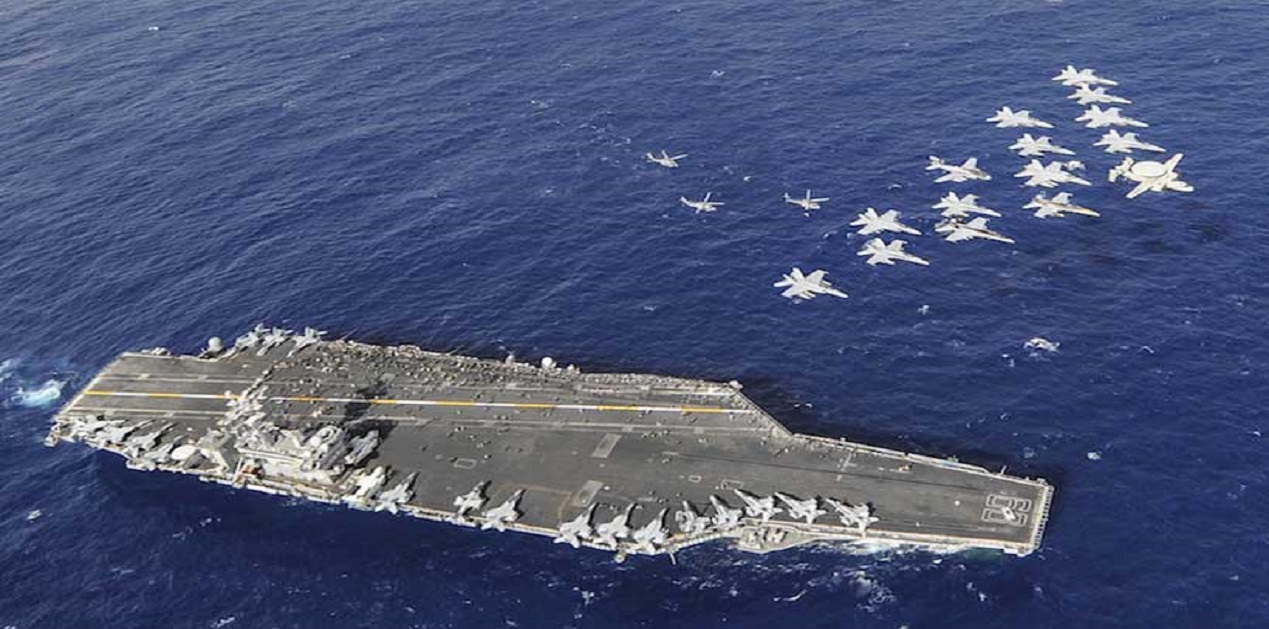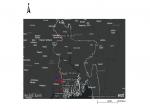The United States of America and the People’s Republic of China are locked in what the Trump administration calls “strategic competition” in trade and technology, China’s diplomatic overtures to change the existing East Asian order, and military build-up. The Chinese believe that rapid military modernisation will help undermine the U.S dominance in the region, improve its comprehensive national power and upstage the regional security order. The U.S naval dominance in East Asia breeds conflict in the Chinese psyche as they see the South China Sea and the areas nearby as their backyard based on inaccurate historical claims. China rejected the International Court of Justice’s advisory in favour of the Philippines and against the legality of China’s claims.
The U.S. administration is making a conscious effort to have better relations with its partners in Asia as China leverages its growing political, economic, and military strength in the region. The previous administrations in the U.S tried to accommodate China and its interest in the existing order as the world’s sole superpower was busy in wars in the Middle East and hoped China would be a “responsible stakeholder.” The change of attitude under the current administration has led to a reassessment of the military modernisation programme of the United States Armed Forces, especially the United States Navy, which has over the years seen fleet reduction while the People’s Liberation Army Navy (PLAN) is undertaking a rapid procurement programme to counter U.S naval dominance in the region. The new U.S strategy involving the Indo-Pacific region has led to the White House, U.S. Legislature (Congress and Senate) and the Department of Defence making new plans, renew and modify dormant plans and enhance the procurement of ships into the U.S Navy in order to effectively counter the ever-growing PLAN.
China’s Naval Build up
China has been modernizing its naval inventory and now boasts more than 300 ships, most of them are modern. China being the largest ship producing country is expected to have more than 400 ships and 100 submarines in the next 15 years.1 Although the threat might be exaggerated as technological advancements by the Chinese might significantly slow down grinding halt with rigorous investment screening processes being put in place by various western countries from which the Chinese State and Privately Owned Enterprises acquire technical companies and convert the technology for military use. Also, the state of the Chinese economy is unlikely to see the unprecedented growth experienced over the last 20 years. This might slow down its shipbuilding and the military build-up.

Number of PLA Navy Ships Presented in Annual Department of Defence (DOD) Reports in Congress - figures include both older and less capable units including some of the questionable operational status and newer more capable units (https://fas.org/sgp/crs/row/RL33153.pdf).
China, through its Communist party hardline mouthpiece, Global Times has opposed the reports by the U.S Defence Department and accused iy of exaggerating China’s capabilities and to justify U.S military spending and the rising anti-Chinese sentiments. One Chinese expert even accused the defence establishment of coming out with hyped up reports in order to secure more funding from the Congress.2 However, information on technological advancement, the military budget, personnel deployed is open to speculation as the Chinese have an opaque system. All essential details are never disclosed by the Chinese President or by the Ministry of National Defense, or by any armed forces chief which is why the rest of the world has to rely on the U.S reports to get a closer, if not accurate, look into what the Chinese are up to and how far they have progressed year on year.
China in the 1990s was focused on creating a navy which would be “the motherland’s Great Wall at sea” according to then President Jiang Zemin. The change in 2012 when he envisioned China as a “great maritime power” leading to an increase in defence budgets and the quality of the feet being transformed by technologically advanced vessels. In 2019, China has the region’s largest navy with 78 submarines, up from 56 in 2018, showing its prowess in shipbuilding and deployment. The reason for this aggressive push for having naval dominance, according to a leading maritime strategist from Peking University, is two-folds. China, in order to become a blue-water navy, plans to open more bases, for instance, in the north Indian Ocean. The other goal is “near sea control,” which means containing threats from the western Pacific Ocean and the north Indian Ocean. The aim of this goal, according to this expert is not for China to evict U.S ships from the region but to create a situation where there would be more restraint on the United States of America and a more confident China after a period of competition.3
U.S Reaction to China’s growing Naval Procurement
The U.S. Congressional reports suggest that China’s anti-access/area-denial (A2/AD) strategy seeks to deter U.S forces from intervening in a conflict in the near-seas of China, especially in case of an armed action involving Taiwan. The Department of Defence defines Yellow Sea, East China Sea, and the South China Sea that are enclosed by what the Chinese call the ‘first island chain’ (the ‘second island chain’ encloses the waters above along with the Philippines Sea which is situated between the Philippines and Guam). In order to achieve the task, as analysed by the U.S Military establishment, China is rapidly increasing its naval capability. In the last decade procurement of new ships by the PLAN has increased on a massive scale. China’s naval strategy seems to be oriented towards displacing US influence in the Western Pacific while defending its commercial sea lines of communication, which connects China’s ports to the Persian Gulf and Africa. The power projection which China is trying to achieve through procurement of modern ships along with the construction aircraft carriers, could be to enforce its claim to regulate military activities in the 200 miles maritime exclusive economic zone. The massive buildup might be to emphasis that China wants to be taken seriously as a regional power and recognised as an emerging world power.4
The Navy Nation Needs (NNN) is the United States Navy game plan for re- establishing its dominance on the high seas under the National Defense Strategy. The six pillars of NNN are Readiness, Capability, Capacity, Manning, Networks, and Operating Concepts. Investing too much on one pillar would lead to the disadvantage of the others. It is important to note that the 355 Navy ship plan spans 30 years and whether it can keep up with the rapid technological changes along with changing security environment is not clear. NNN is expandable and can accommodate any new tactical change needed to counter adversaries of the U.S Navy. Shipbuilding has now been prioritised in order to get to the numbers which are needed to create specific deterrence in case of conflict.5

(https://www.secnav.navy.mil/fmc/fmb/Documents/19pres/LONGRANGE_SHIP_PLAN.pdf)
The Congress, while discussing China’s naval strategy, has raised some pertinent questions. The first one is that as to whether 355 ships are enough to counter the threat posed by the Chinese Navy and the resurgent Russian Navy. Another critical question which was asked during the proceedings is whether there is another Force Structure Assessment (FSA) needed because the current NNN plan was made according to the assessment made in 2016 under the Obama administration. The Trump administration through the National Defense Strategy (NDS) by the DOD and the National Security Strategy (NSS) by the White House has reset U.S focus to not just on China but on Russia too. In the light of these two relatively new documents Congressional Representatives have asked Navy witnesses as to whether a new FSA would be required. The Deputy Chief of Naval Operations has confirmed that there might be a reassessment in line with these two documents.
Along with budgetary constraints, there is also the problem of upgradation of the naval shipbuilding yards, cost overruns of both lead ships and follow-on ships and a host of other issues. The United States Government Accountability Office (GAO) in a report in 2017 criticised the state of the shipbuilding yards, which is affecting the operational capability of the U.S Navy. The Navy at one point of time operated 13 shipbuilding yards which have now fallen to four, with the one in Virginia over 250 years old. The Naval shipbuilding yards are not equipped to deal with new age ships, specifically nuclear-powered vessels. A Navy Draft study in 2017 highlighted that the current capacity and capability of the aging shipbuilding yards is not adequate to support future needs. Aging equipment, like the furnace at Norfolk which was installed in 1931 to heat submarine parts that enables deep-sea pressure, is now not able to heat the parts at the right temperatures or evenly. This leads to the furnace being shut down. A review of previous ten years’ of submarine repairs said it will take around two decades to restore the facilities of these shipyards.6
The Navy was allocated 8 Billion USD to complete the lead ships and 3 billion USD more for follow – on ships making it 11 Billion USD since 2007. While the amount of money might not look much, it is the delay in building the ships to the point of operational capability which is of concern. Reports also suggest that the US Navy is accepting ships with a large number of deficiencies. While there have been recommendations made by the GAO to the Navy, these are yet to be implemented. The new Ford-class aircraft carriers will not be ready to be deployed until 2022. The carrier cost Navy 2 Billion USD above the estimated amount, and the navy accepting the delivery of the carrier two years late, and before it was completed. The gap between over-promised ships and the reality of ship-building effort, leads to more pressure as costs automatically grow beyond estimates. A sixty-one percent production rise in production is needed to reach a 355 ship navy. Work experience of the civilian work force at the shipyards too is relatively less. 7 In 2014 some 50 percent of the workforce had less than ten years of experience, which has led to a decline in overall workforce productivity.8
John S. McCain National Defense Authorisation Act (NDAA), 2019 gives authorisation for procurement of new Gerald R. Ford class carriers, codenamed CVN 81 and also expediting CVN- 80 (USS Enterprise), which was authorised under Section 121 of the John Warner NDAA of 2007. 9 However, there are current issues with this particular class of aircraft carriers starting with the flagship of the class, USS Gerald R. Ford (CVN-78). The issue with CVN-78 is that it was procured 32 months after it was supposed to be delivered, the commissioning of the carrier is being delayed because the elevators which help lift munitions to the main deck of the ship were malfunctioning. Due to these delays, President Trump raised skepticism about using more advanced technologies and wants the military establishment to continue with the tools in hand.10
The Congress Report titled ‘Navy Force Structure and Shipbuilding Plans: Background and Issues for Congress’ in its findings the context of Section 121 of NDAA, 2019 makes points that have implications as far as China is concerned. The findings indicate that the U.S Navy is operating at maximum capacity, which means longer deployment and less maintenance, and the aircraft carrier force structure is diminishing. What is more worrying is that while the NSS has changed its Asia-Pacific to its Indo-Pacific strategy and renamed the Pacific Command (PACOM) to US Indo-Pacific Command, the US Navy has not been able to maintain an aircraft carrier strike group despite the requirement to have one. The same is the situation with the USCENTCOM (Central Command).11
Dispersed Lethality
The U.S Navy in order to cope up with these shortcomings is looking towards new technology, and a new strategy has been devised to deal with these shortcomings and is called ‘dispersed lethality.’ The strategy focuses on newly acquired technologically advanced weapons along with sensors that increase offensive reach.12 In layman’s terms ‘dispersed lethality’, is a coordinated attack of multiple platforms from multiple directions on multiple targets. The new direction taken by the U.S Navy may not take into consideration that technology is a game of cat and mouse. If the U.S. makes a supersonic missile (Mach 4), one can expect the Russians and the Chinese to come up with technology to deal with the threat. Dispersed lethality is an operational concept which gives surface forces priority over carrier groups and balances reductions as envisaged in the NNN under the National Defense Strategy. Aircraft carrier strike groups which have always been at the forefront of power projection, cannot be substituted with Surface Action Groups without freeing up ships protecting the Aircraft carrier. The strategy needs to be reworked according to the experts. While the U.S Navy has a technological advantage, it cannot be the only basis to get over the depleting fleet problem. Dispersed Lethality needs additional force, which means more ships.
If the U.S Navy is serious about dispersed lethality it would mean pulling out the aircraft carriers to make way for Surface Action groups in the first island chains.13 The dilemma regarding the strategy would remain. The current state of the U.S navy’s fleet raises the question of US standing its ground in the Indo-Pacific region and sustain its commitments to its defence partners and formal allies in the face of growing Chinese transgressions in the South China Sea.
Conclusion
The challenges faced by the U.S Navy might be the reason why Quad has been reactivated after lying dormant for over a decade. The Quad some believe, would together counter the rising Chinese challenge to the rule-based order in the Indo- Pacific. An important question, however, is whether the U.S can hold up its part of the security commitments it has made in the region given its depleting naval forces. The U.S would like the Quad to be active in order to ensure that the navies of Japan, India and Australia bridge the gap. But the Quad is far from being an alliance, and is yet to develop into a strong cooperative forum.
On Quad, analysts have two distinct theories about the 4-nation security dialogue. The optimistic perspective about the prospects of Quad, on the ground that it would help countries involved to make China more restrained and reasonable. The sceptical view is of Quad’s demise, if it takes shape as a new military alliance. For one, India may not be ready for such a collective alliance as of now. India is also the only member to share a long and disputed land boundary with China, and has never had any foreign military presence. Washington, however may to consider interoperability between the Indian, Australian and the Japanese navies. However, the recent meeting of the Foreign Ministers of the four nations bodes well for the group’s growing importance.
References:
- Ross, Robert S. "The End of U.S. Naval Dominance in Asia." Lawfare. November 27, 2018. Accessed January 2019. https://www.lawfareblog.com/end-us-naval-dominance-asia.
- Siqi, Cao. "US Report on China's Military "not in Line with Countries’ Interests": Defense Ministry." Global Times. August 17, 2018. Accessed January 2019. http://www.globaltimes.cn/content/1115893.shtml.
- https://www.economist.com/china/2019/04/25/china-throws-a-revealing-party-for-the-anniversary-of-its-navy
- Congressional Research Service. February 23, 2018. Section 232 of the Trade Expansion Act of 1962, United States of America. https://fas.org/sgp/crs/misc/IF10667.pdf
- Report to Congress on the Annual Long-Range Plan for Construction of Naval Vessels for Fiscal Year 2019. Report. February 2018. Accessed January 2019. https://www.secnav.navy.mil/fmc/fmb/Documents/19pres/LONGRANGE_SHIP_PLAN.pdf.
- McCabe, Robert. “The Navy's 4 Public Shipyards Are in Bad Shape, and It Will Take 19 Years to Restore Their Facilities, Study Says.” pilotonline.com. The Virginian-Pilot, August 9, 2019. https://pilotonline.com/business/defense-shipyards/article_3c5e4e79-73c1-56cf-a993-fe12b3398f7c.html.
- “Navy Shipbuilding Past Performance Provides Valuable Lessons for Future Investments.” Government Accountability Office , June 2018. https://www.gao.gov/assets/700/692331.pdf.
- Jessie, McMahon, Michael, Kallimani, James G., Tremblay, and Daniel. “Current and Future Challenges to Resourcing U.S. Navy Public Shipyards.” RAND Corporation, May 2, 2017. https://www.rand.org/pubs/research_reports/RR1552.html.
- Thornberry, and Mac. “Text - H.R.5515 - 115th Congress (2017-2018): John S. McCain National Defense Authorization Act for Fiscal Year 2019.” Congress.gov, August 13, 2018. https://www.congress.gov/bill/115th-congress/house-bill/5515/text#toc-HEB4BF3F8943E419C8D0CCF6F524D8AFA.
- Capaccio, Anthony. “Navy Boss to Trump: ‘Fire Me’ If $13 Billion Carrier Isn’t Fixed.” Bloomberg, January 2019. https://www.bloomberg.com/news/articles/2019-01-08/navy-boss-to-trump-fire-me-if-13-billion-carrier-isn-t-fixed?fbclid=IwAR2ic3WxHjcTxyqC4gAW5FDe6fg-vXDPOPR4biYxMBd5B-Jq_qi6ZEMo7lI.
- “Navy Force Structure and Shipbuilding Plans: Background and Issues for Congress.” Congressional Research Service, November 19, 2019. https://fas.org/sgp/crs/weapons/RL32665.pdf.
- Ross, Robert. “The End of U.S. Naval Dominance in Asia.” Lawfare, October 31, 2019. https://www.lawfareblog.com/end-us-naval-dominance-asia.
- Observation by Naval Expert at Vivekananda International Foundation.
(The paper is the author’s individual scholastic articulation. The author certifies that the article/paper is original in content, unpublished and it has not been submitted for publication/web upload elsewhere, and that the facts and figures quoted are duly referenced, as needed, and are believed to be correct). (The paper does not necessarily represent the organisational stance... More >>
Image Source: https://moderndiplomacy.eu/wp-content/uploads/2018/02/usnavy.jpg











Post new comment